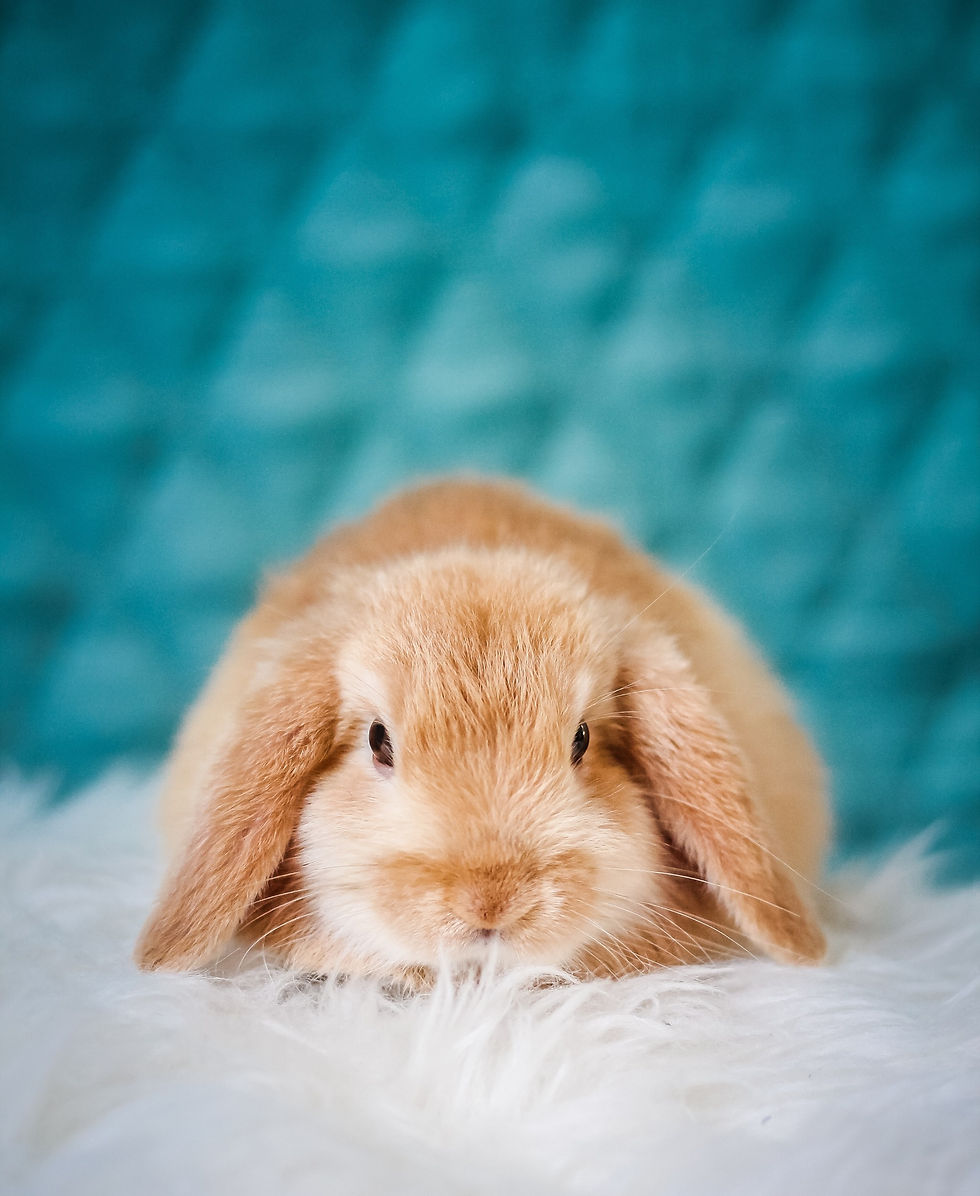How To Introduce Your Pet Rabbit To A Cat Or Dog
- Humane Society of North Texas
- Jul 28, 2020
- 5 min read
Updated: Jan 12, 2021
Guest Blog by : Melissa Kauffman
Contrary to popular belief, rabbits and cats and even dogs can make great pet companions. Although these prey-predator combinations seem like they’re defying the course of nature, it’s in fact a very common and rewarding relationship. That said, you can’t really erase the natural prey drive in cats or the flight instinct in rabbits, so the key to a peaceful bunny-cat interaction lies in the way you handle their encounter.
Here are useful tips on how to introduce these very different animals and help them live together in a peaceful, friendly environment.

Rabbits and cats - can they happily coexist?
A cat would most probably turn a rabbit into its dinner if it came across one in nature; however, in a favorable environment where the needs of both pets are satisfied, these natural instincts are very much controllable.
In other words, if a cat is adequately familiarized with a rabbit, it will less likely feel predatory. Similarly, a rabbit also needs to feel safe and protected to be comfortable in a cat's company. Once the pets are accustomed to the new smell and presence, they will start to see each other as normal and expected members of the household. Still, this doesn’t mean that your cat won’t feel tempted to stalk and chase other rabbits, or even that your bun is safe from the neighbor’s cat.
Other determining factors for successful bonding include the pets’ breed, temperament, and age. Rabbit breeds, for example, can differ as some are more docile and calmer around people and other animals. Larger breeds like the Checkered Giant and California Giant are less likely to get very nervous and paralyzed around a predator animal.
Also, it’s important to be realistic and aware of the fact that the farthest this relationship can go is mutual tolerance and getting used to the other pet’s presence. Don’t get too relaxed about the bunny-cat interaction and think about safety in the first place.

Introducing a bunny to a cat, step by step
So you’ve decided to enlarge your pet family and adopt a cat or a bunny. How should you introduce it properly to a rabbit, or vice-versa? Your pets’ first encounter will turn out to be essential, as it will set the tone for their relationship in the future.
1. Create a stress-free environment before the meeting
Before they meet, the cat and the rabbit need to be on their best behavior, calm and relaxed. This especially goes for the rabbit, as the cat’s presence will induce a lot of stress and restlessness in the beginning. To help your pets feel as comfortable as possible, make sure they are well-fed, rested, and in a good mood. The place of meeting is also important and it should be quiet and spacious. Make sure to choose a neutral spot for both the pets, preferably somewhere they don’t abide, eat and sleep to prevent the pets from feeling territorial or pressured by external stresses.
2. Make sure the rabbit is safe and enclosed
Place the rabbit in its cage before bringing it near a cat. To make the interaction happen, the bunny should be kept in a safe and comfortable place, secured from the cat’s possible sudden reactions. Make sure to get a cage or a carrier that has enough room for moving and hopping around, place some hay, food, treats, and water inside to make it welcoming.
3. Try out scent familiarization
This includes transferring the scent from one animal to another and vice-versa. The technique helps minimize the stress and negative reactions of the abrupt change. Take a clean cloth or a towel, then gently stroke one of the pet’s back and use the same cloth to stroke the other animal. Repeat the process several times to ensure the pets are accustomed to the new smells.
4. Start the interaction
The cat should be let loose while the rabbit is safe in a closed cage. Let the animals get used to each other’s smell, movement, and behavior. It will take a while before you can let the rabbit loose, but try to enable the interaction at least an hour a day. If you notice the rabbit feeling too threatened and upset, remove the cat and try again later.
5. Monitor their behavior
It’s essential that you be present all the time while the pets are bonding, according to feline experts at The Idle Cat. Monitor their behavior patterns and control the situation by separating the animals every time you notice high intolerance and anxiety. It’s crucial not to force things, as the stress can influence the rabbit’s health and wellbeing.
Introducing a dog and a rabbit
When introducing a dog to your bunny, you must keep in mind a hierarchy imposed by nature: rabbits are prey animals for dogs. Putting them together could wake the hunting instinct in the dog. So, as with cats, a safe environment, supervision, and patience are key elements to a prosperous and peaceful co-existence in your home!
If your rabbit already has residence in your home and you want to add a dog to the mix, you should avoid species like Labrador or Golden Retriever for their innate urge to hunt small animals. A successful introduction also depends on the dog's personality, which is why it is crucial to monitor a dog's behavior and work out whether he’s a playful, boisterous pooch or a calm and retreating pup. Nevertheless, ask for advice from a vet or a dog breed expert, and don't forget to mention the breed of your rabbit, because some of them are more prone to socialization than others.
When choosing a place for a meeting, pick a neutral zone, since the animals could feel their space is compromised. Your living room or a yard could suit perfectly to this purpose. Make sure to keep your rabbit in their hutch and hold your dog tightly on a lead. Then, follow the same steps as you would if you were introducing a cat and a rabbit.
Under no circumstances, should you leave the animals unattended. If you notice any signs of change in their behavior, like the dog begins to growl or the rabbit seems frightened, stop it immediately and put them in separate, calming spots.

The pets have met - what’s next?
To make sure the cat or dog and rabbit get along well, you need to be patient, determined and, above all, realistic. Don’t expect them to become best friends, especially not right away. You may notice the rabbit being bossy and taking the initiative for interaction, which will depend on the rabbit’s personality. Don’t worry and let the relationship develop at its own pace. Give the animals a chance to be assertive, so they don’t associate your presence and involvement as disapproval. That said, never leave the pets completely alone to ensure safety and peace.
The Humane Society of North Texas (HSNT) currently has rabbits in need of a forever home. Please visit our Small and Furry page to view all available rabbits and other small pets.
Pets and People, Saving Each Other™

www.hsnt.org
HSNT’s mission is to act as an advocate on behalf of all animals and to ensure their legal, moral and ethical consideration and protection; to provide for the well-being of animals who are abandoned, injured, neglected, mistreated or otherwise in need; to promote an appreciation of animals; and to instill respect for all living things.
Information for this blog was sourced from Dogington Post and The Idle Cat.






Comments